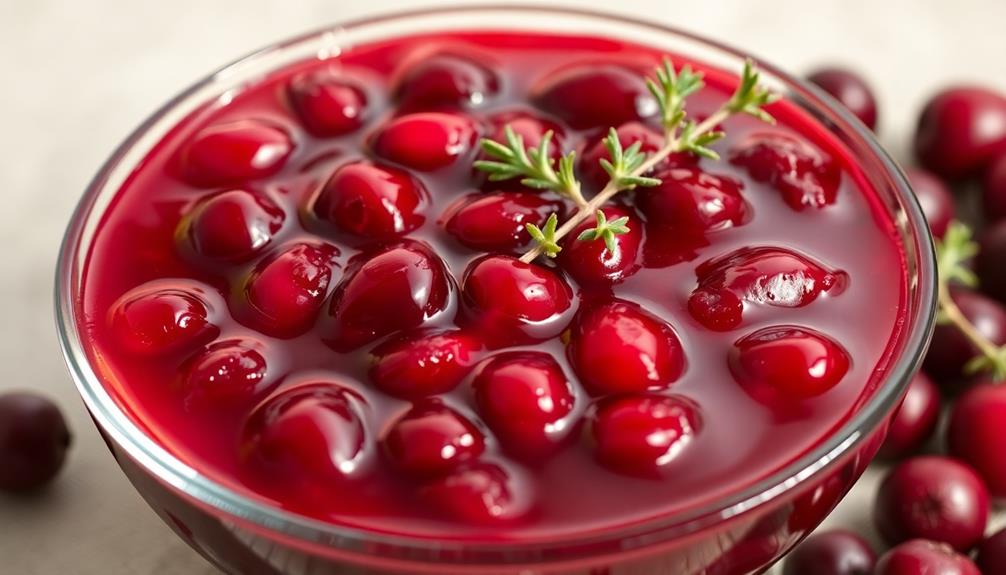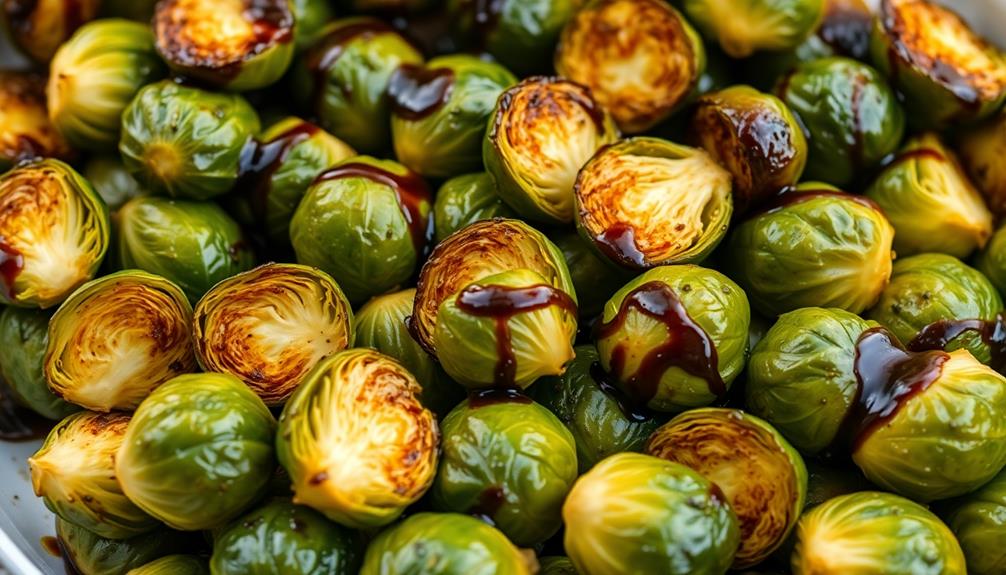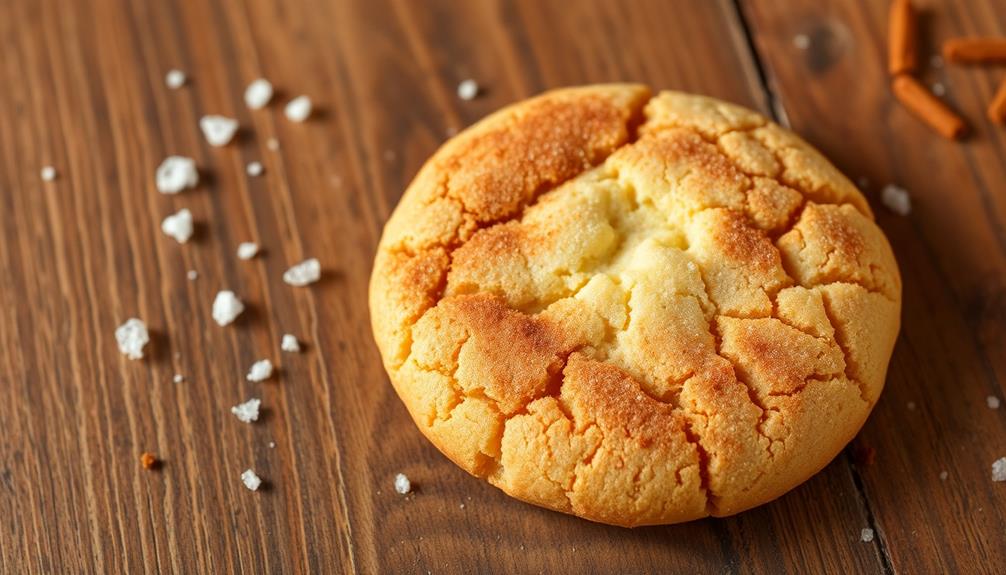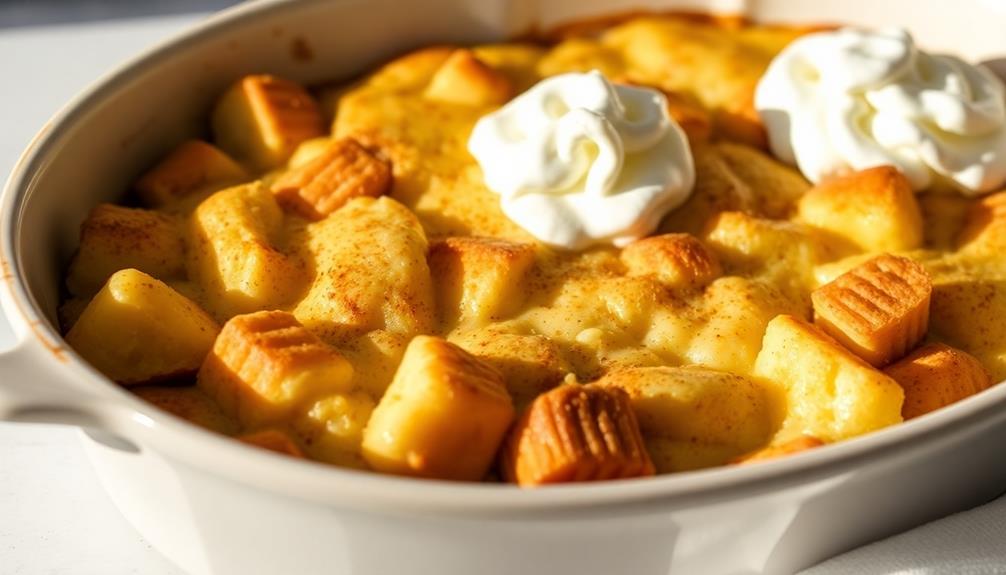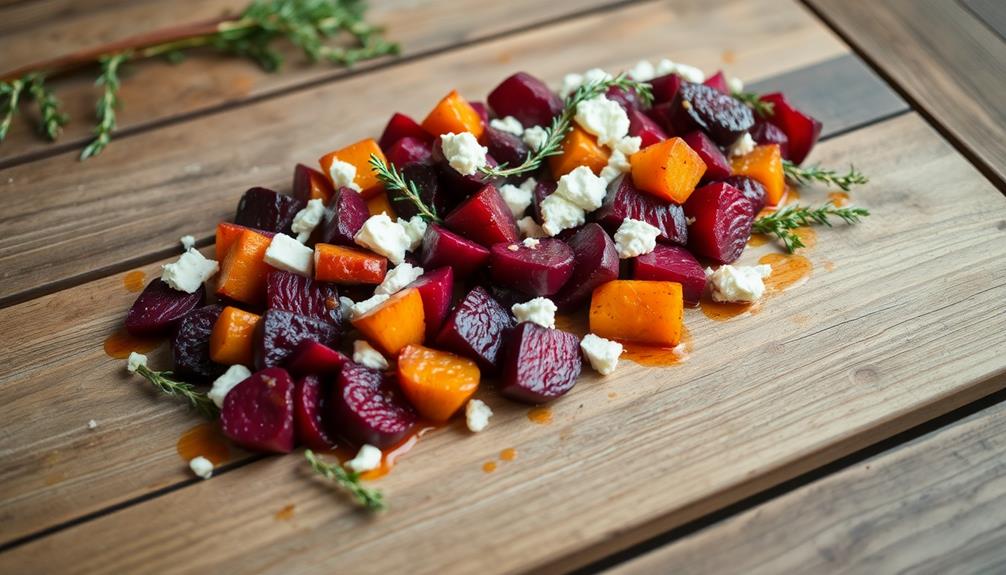Cranberries are a beloved Thanksgiving staple, and you'll be amazed at how easy it is to make your own cranberry sauce from scratch! The festive crimson hue and irresistible sweet-tart flavor will elevate your holiday meal. Start by rinsing fresh cranberries, then simmer them with sugar and seasonings until the berries burst, creating a thick, glossy sauce. The whole process takes just 15 minutes! Chill the sauce before serving, then garnish with fragrant orange zest. Homemade cranberry sauce is not only delicious, but it also lets you customize the flavors. Want to learn more about the fascinating history and health benefits of this versatile condiment?
Key Takeaways
- Cranberry sauce has origins traced to Native American tribes who incorporated the berries into their cooking.
- Serving cranberry sauce with turkey became a Thanksgiving tradition after Pilgrims learned about cranberries from Native Americans in the 1600s.
- The main ingredients for homemade cranberry sauce include fresh cranberries, sugar, water or juice, and optional spices like cinnamon and allspice.
- The cooking process involves simmering the cranberry mixture until the berries burst and the sauce thickens, then adding flavor enhancements like orange zest.
- Homemade cranberry sauce can be served warm, at room temperature, or chilled, and it pairs well with turkey and other holiday dishes.
History
The origins of cranberry sauce can be traced back to the Native American tribes who first used the tart, ruby-red berries in their cooking.
These early inhabitants of North America would harvest the cranberries and mix them with deer meat and maple syrup to create a type of pemmican, a nutrient-rich food that could be stored for the long, harsh winters.
When the Pilgrims arrived in the 1600s, they quickly learned about the versatile cranberry from the Native Americans and began incorporating it into their own dishes.
Cranberries grow naturally in bogs, which are wetland areas with acidic soil and plenty of water.
The Pilgrims discovered that cranberries grew abundantly in the bogs of New England, making them an easily accessible and abundant ingredient.
Over time, the tradition of serving cranberry sauce alongside roasted turkey at Thanksgiving celebrations became firmly established in American culture.
Recipe
Making cranberry sauce from scratch is a simple and rewarding process that can elevate your holiday meals. The vibrant color and tangy-sweet flavor of homemade cranberry sauce is a delightful contrast to the rich and savory dishes that often grace our tables during this time of year.
Cranberries are a versatile fruit that lend themselves well to both sweet and savory preparations. When cooked down with a bit of sugar and spices, they transform into a thick, jam-like condiment that pairs beautifully with turkey, stuffing, and a variety of other dishes.
Ingredients:
- 12 ounces fresh or frozen cranberries
- 1 cup granulated sugar
- 1/2 cup water
- 1 cinnamon stick
- 1 teaspoon orange zest
- 1/4 teaspoon ground allspice
In a medium saucepan, combine the cranberries, sugar, and water. Bring the mixture to a boil over medium-high heat, stirring occasionally to dissolve the sugar.
Once boiling, reduce the heat to medium-low and simmer for 10-15 minutes, or until the cranberries have burst and the sauce has thickened. Remove the cinnamon stick, then stir in the orange zest and allspice.
Allow the cranberry sauce to cool completely before serving. For best results, make the cranberry sauce a day or two in advance to allow the flavors to meld.
The sauce can be stored in the refrigerator for up to 2 weeks. When ready to serve, the cranberry sauce can be enjoyed chilled or at room temperature.
Consider garnishing with a few fresh cranberries or a sprig of thyme for a beautiful presentation.
Cooking Steps
Rinse the cranberries under cool water to wash off any dirt or debris.
Then, add the sugar to the cranberries and stir until combined.
Simmer the mixture on the stovetop until it thickens into a delicious cranberry sauce, about 10 minutes.
Once it's cooled, garnish it with a sprinkle of fresh orange zest before serving.
Step 1. Rinse Cranberries Before Simmering

First, you'll want to thoroughly rinse the cranberries under cool running water. This important first step helps remove any dirt, debris, or blemished cranberries from the bunch.
Gently sort through the cranberries as you rinse, discarding any that look shriveled or discolored. You'll know the cranberries are ready when the water runs clear.
Next, transfer the rinsed cranberries to a medium-sized saucepan. They should fill about halfway up the sides of the pan. This ensures they'll have enough room to simmer and bubble without overflowing.
Add the remaining ingredients – sugar, orange juice, and a pinch of salt – and stir to combine.
Place the saucepan over medium heat and bring the mixture to a gentle simmer. As the cranberries cook, you'll notice they start to burst and release their naturally tart and tangy juices.
Let the sauce simmer for about 10 minutes, stirring occasionally, until it thickens to your desired consistency.
Step 2. Add Sugar to Cranberries
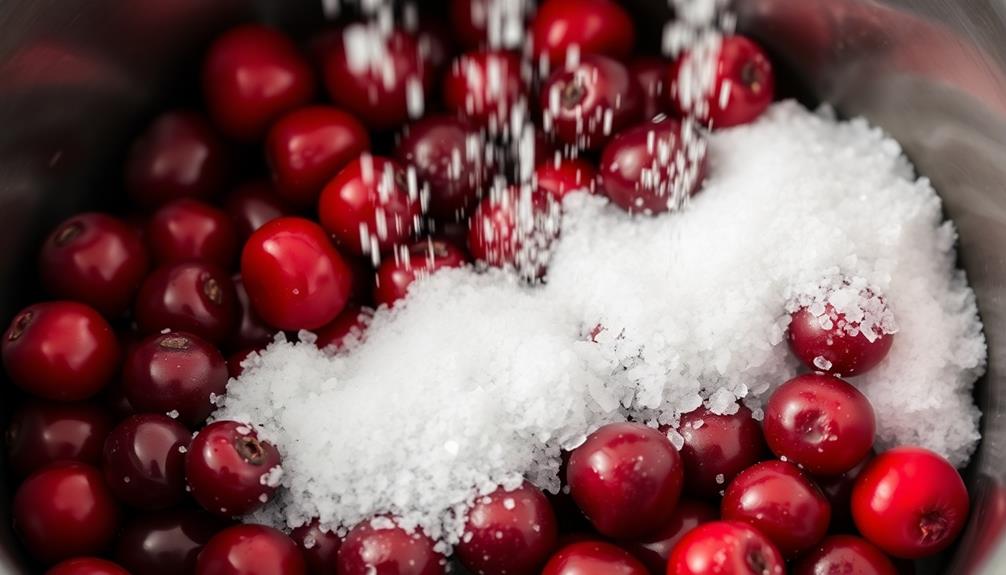
Add a generous amount of sugar to the rinsed cranberries in the saucepan. You'll want to sprinkle in about one cup of sugar, or more if you like your cranberry sauce extra sweet.
Stir the sugar into the cranberries until it's fully incorporated. As the mixture heats up, the sugar will dissolve, creating a lovely, thick sauce.
Now, don't be afraid to adjust the amount of sugar to your taste. If you prefer a tart cranberry flavor, use a bit less. Or, if you have a serious sweet tooth, add a little more.
The great thing about making cranberry sauce from scratch is that you get to control the flavors.
Once the sugar is mixed in, let the cranberries continue simmering, stirring occasionally, until the sauce thickens up, about 10 to 15 minutes.
Soon, your kitchen will be filled with the warm, inviting aroma of homemade cranberry goodness!
Step 3. Simmer Cranberries Until Thickened

With the sugar now fully incorporated, allow the cranberries to continue simmering, stirring occasionally, until the sauce thickens to your desired consistency, about 10 to 15 minutes.
As the cranberries cook, you'll notice the mixture start to transform. It'll bubble and pop, releasing a mouthwatering aroma that'll have your taste buds tingling with anticipation.
Stir gently, so the cranberries don't break down too much – you want to retain some of their delightful texture. Keep an eye on the pot, giving it a stir every now and then, until the sauce reaches a nice, spreadable consistency.
When it's ready, the cranberries will have softened, and the mixture will have thickened into a glossy, jewel-toned delight.
Now, you're just one step away from enjoying your homemade cranberry sauce – isn't that exciting? Get ready to savor the sweet-tart flavors and the satisfying, velvety texture you've created from scratch.
Step 4. Chill Cranberry Sauce Before Serving
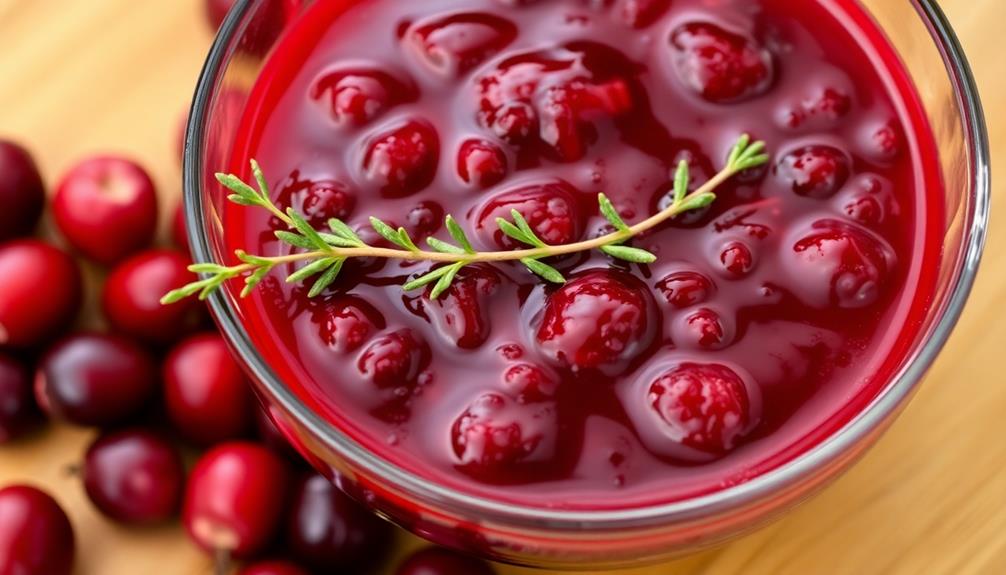
Once the cranberry sauce has reached your desired thickness, it's time to chill it before serving. This will help the flavors meld together and give the sauce a lovely, smooth texture.
Simply pour the warm cranberry mixture into a bowl or container and pop it in the fridge. You'll want to let it chill for at least 2 hours, but you can leave it in there up to a day ahead of time if you'd like to get a head start on your holiday prep.
As the cranberry sauce chills, you'll notice the color deepen and the consistency become thicker and more velvety. The sweet-tart flavor will also become more pronounced.
When you're ready to serve, give the chilled cranberry sauce a good stir to recombine any separation. Scoop it into a pretty serving dish and enjoy! Your homemade cranberry sauce will be the talk of the Thanksgiving table.
Step 5. Garnish With Orange Zest

To give your homemade cranberry sauce an extra burst of brightness, consider garnishing it with a bit of fresh orange zest. The vibrant, citrusy aroma of orange zest will perfectly complement the tart, fruity flavors of the cranberries.
Simply use a zester or fine grater to remove the thin, outer layer of the orange peel, being careful to avoid the bitter white pith. Sprinkle the fragrant orange zest over the top of your chilled cranberry sauce just before serving.
The vivid flecks of orange will add a beautiful pop of color and an irresistible zing to your dish. You can even try using a combination of orange and lemon zest for an extra layer of bright, tangy flavor.
Garnishing with a touch of citrus is an easy way to elevate your homemade cranberry sauce and impress your family and friends. Get ready to wow your taste buds with this simple yet delightful finishing touch.
Final Thoughts
Crafting cranberry sauce from scratch may have seemed daunting, yet the end result is undoubtedly worth the effort. The vibrant red color and tangy-sweet flavor are a delight for the senses.
As you spoon the homemade sauce onto your plate, the bright orange zest adds a delightful citrus note, complementing the cranberries perfectly.
With every bite, you'll appreciate the care and attention you put into making this dish. The satisfying pop of the cranberries and the silky smooth texture are sure to impress your friends and family. As you savor the flavors of this exquisite dish, you’ll be reminded of the time and effort you took to prepare it. The burst of sweetness from the cranberries paired with the creamy texture create a truly delectable experience that everyone will enjoy. And as you enjoy this dish, you might even consider learning how to make cranberry mimosas to complement the meal.
Not only is this cranberry sauce a delicious addition to your holiday spread, but it's also a source of pride, knowing you created it with your own two hands.
As you savor the last delectable morsels, remember that the joy is in the process. Embrace the satisfaction of mastering a new skill and enjoy the fruits of your labor.
This cranberry sauce is a testament to your culinary prowess and a cherished part of your holiday traditions.
Frequently Asked Questions
Can Cranberry Sauce Be Frozen for Later Use?
Yes, you can freeze cranberry sauce for later use. It's a great way to preserve the delicious tart flavor and have it on hand whenever you need it. Just be sure to store it properly in an airtight container.
How Long Does Homemade Cranberry Sauce Last in the Fridge?
Homemade cranberry sauce can last up to 2 weeks in the fridge when stored in an airtight container. Just be sure to check for any signs of spoilage before using it.
Can I Use Frozen Cranberries to Make Homemade Sauce?
Yes, you can use frozen cranberries to make homemade sauce. Simply thaw the cranberries and follow your recipe as usual. Frozen cranberries work just as well as fresh ones, making it a convenient option.
Can I Use a Different Sweetener Instead of White Sugar?
Sure, you can use a different sweetener instead of white sugar. Maple syrup, honey, or even brown sugar would work well. Just adjust the amount to match the desired level of sweetness in your recipe.
What Are Some Creative Ways to Use Leftover Cranberry Sauce?
You can get creative with your leftover cranberry sauce. Try using it as a spread on toast, swirling it into yogurt, or using it as a glaze for roasted meats. The possibilities are endless when you get inventive with this versatile condiment.
